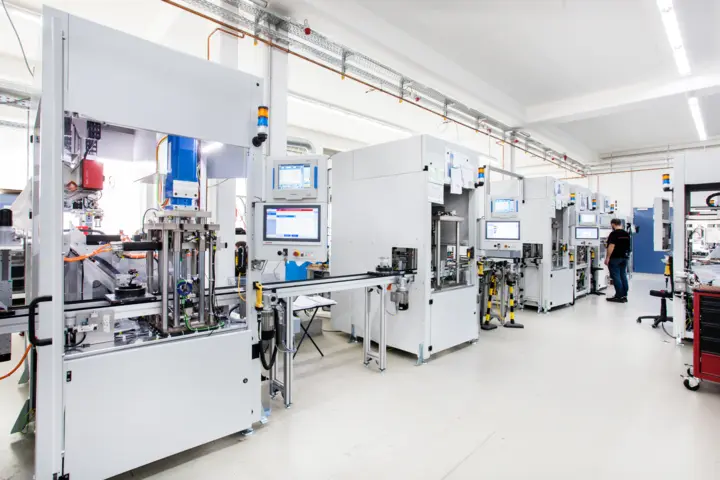Automated quality testing – including traceability
Many of the projects in the medical technology segment revolve around 'disposables' – single-use medical products that must be disposed of after use, so they need to be produced in large quantities. High quality is an absolute necessity here, as Frank Polak confirms by offering some insights into a current project: 'On behalf of a dental laboratory, we collaborated with a firm of consulting engineers to develop a highly automated production cell for mixing nozzles. To ensure quality in the live process, we use a Kistler torque sensor that communicates directly with the machine control.' The dental laboratory uses the mixing nozzle to produce casting compounds for dental products such as those needed by dentists to prepare dental impressions.
To guarantee the functionality of the sub-assembly, a friction coefficient test (< 0.5 Nm) is carried out on the mixing mechanism of the assembled nozzle.
"This product is a plastic sub-assembly consisting of four parts that are joined in the machine and then tested. Thanks to Kistler's solution, we can guarantee the quality of about five million units per year – and at the same time, we can ensure traceability,"
Frank Polak, Head of Medical Engineering at Jonas & Redmann
'Traceability is an essential requirement in today's medical sector – and responsibility for it is increasingly passed on to the special-purpose machinery manufacturer,' Polak continues.
End-to-end inline process monitoring
The combination of Kistler's 4502A torque sensor and the maXYmos BL evaluation system ensures end-to-end inline process monitoring: the torque curve for each individual product can be tracked accurately on the monitor of the maXYmos system.
But no highly-automated plant from Jonas & Redmann would be complete without a pre-integrated mechanism for segregating bad parts: the measurement value produced by the torque sensor is used to generate an OK/NOK signal that is then transmitted directly to the control - so any parts joined with insufficient torque can be segregated immediately. Polak notes: 'With a production rate of 40 parts per minute – equivalent to a cycle time of one and a half seconds – this poses an enormous challenge. And that's why we're so highly satisfied with Kistler's solution – because it does exactly what we need for the application! Before we use any third-party components, we carefully check whether we could meet the requirement by designing the solution ourselves. But in this case, Kistler's system was quite simply the better alternative for integrated process monitoring.'
Tried-and-tested technology – fast integration
Polak's attention was drawn to Kistler by his colleague Andreas Nowak, Head of Mechanical Engineering and Operational Technology at Jonas & Redmann, who is thoroughly familiar with the components and systems available on the market. Nowak has opted for solutions from Kistler in the past, and he is highly satisfied with them: 'In our joining processes, we already make use of Kistler's electromechanical joining systems: they ensure effective automation because they feature high efficiency and precise control. But there could also be further applications for medical engineering in the future, especially as regards process monitoring.'
The prototype of the new plant to produce the mixing nozzles, with integrated Kistler components, was showcased on Jonas & Redmann's stand at the 2018 Automatica trade fair. One important factor in the successful outcome was Kistler's collaboration with the consulting engineers who were executing the project: together, the two teams quickly devised a test rig to verify the solution's feasibility. At the very first attempt, the test confirmed that the transducer shaft is suitable for this application case. The assumed theoretical values for frictional torque were almost entirely identical to the actual torques measured on the test rig. Jörg Nimz, a Sales Engineer at Kistler, is naturally delighted with the results: 'The transducer shaft used here has already proven its excellence on the market many times over – especially in applications such as this one for measuring frictional coefficients. So we're pleased that Jonas & Redmann placed their trust in us, and now we're eager to hear about the end user's experience.'





![Jonas&Redmann [object Object]](https://kistler.cdn.celum.cloud/SAPCommerce_Document_Preview/961-192e.webp)